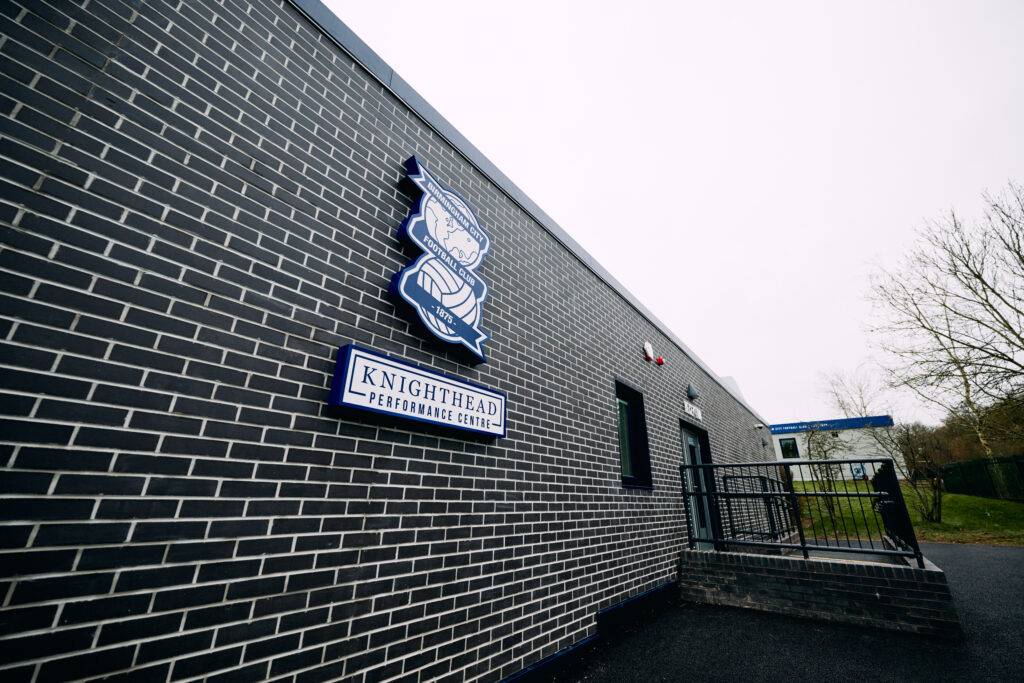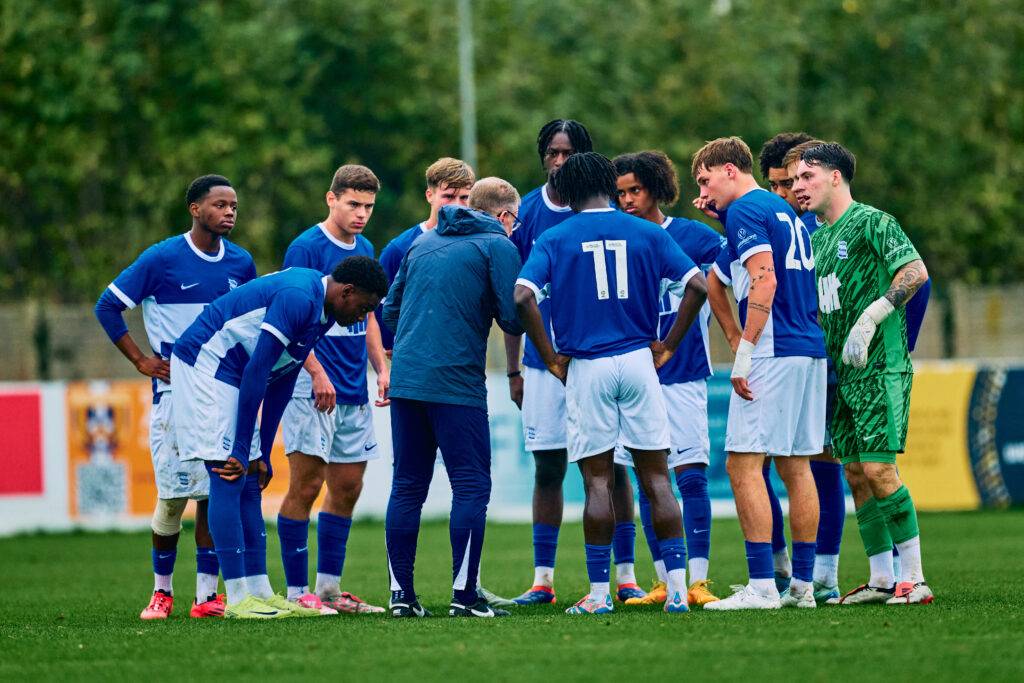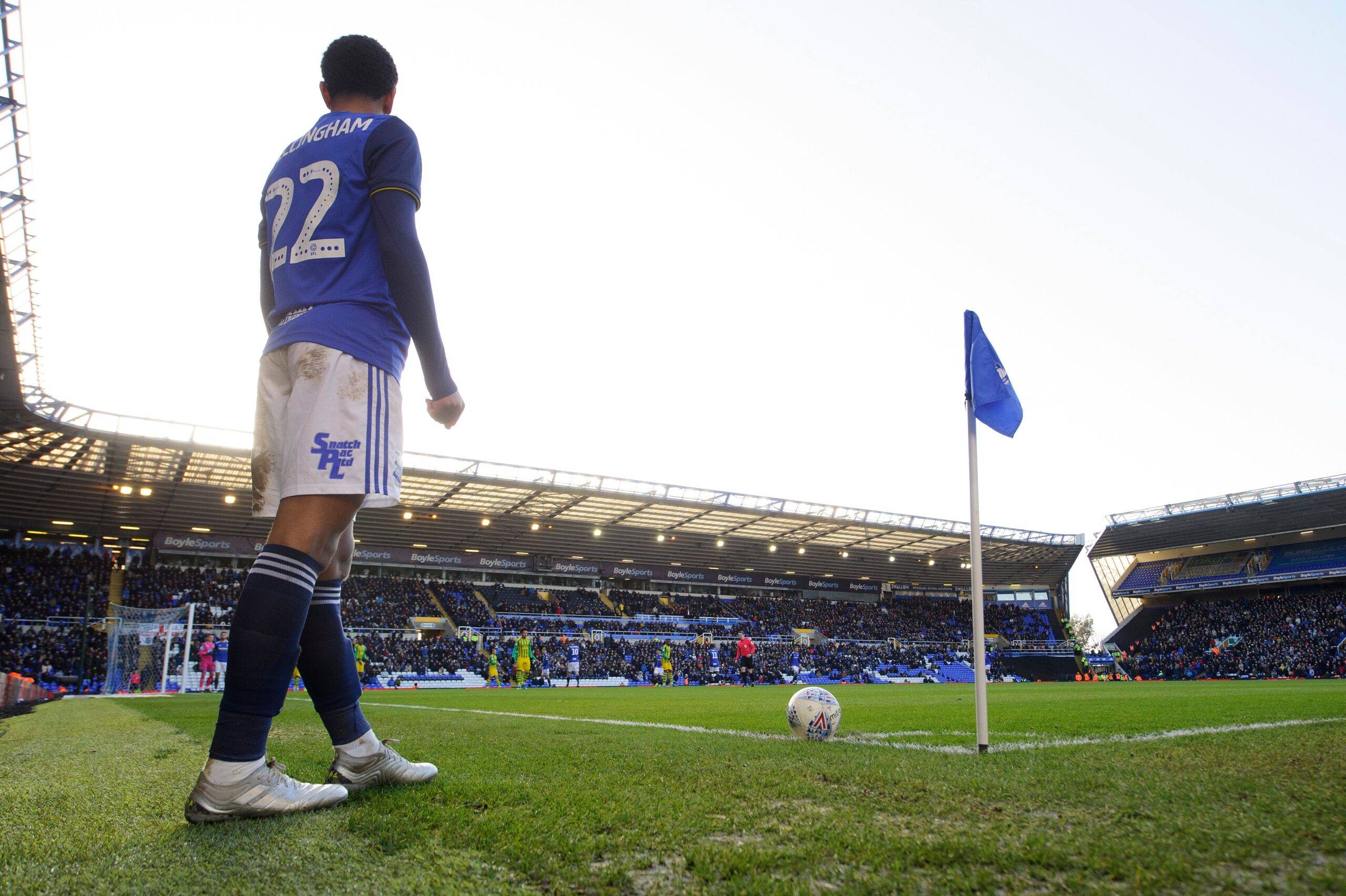Among various landmarks of the past few months, Blues’ award of a Category One licence for their boys Academy was of major significance.
We take a deep dive into what it all could mean whilst, first, recalling the time when the club caused an Academy uproar.
Kids were in tears.
Parents were angry and confused.
Coaches were in shock and had no answers to the many questions.
I’ll never forget the evening when it emerged that Birmingham City were scrapping their Academy, in December 2020.
My son had been in the Blues system since he was eight and was directly affected.
A statement dropped the day before we arrived at Bodymoor Heath for a friendly against Aston Villa.
The scene in the car park as Blues youngsters disembarked from their lifts and headed to the dressing rooms was traumatic.
‘We know as much about it as you do,’ the under-15s lead coach shrugged to quizzical parents. Coaching and support staff jobs were under threat, and the dreams of around 200 kids in the various age groups had been abruptly shattered.
Blues plan was to shut down the foundation and youth development phases – ages under-8s to under-16s – and concentrate on a B team model.
It was a kneejerk decision driven by then CEO Xuandong Ren and caused mayhem.
To add to the sense of chaos, Academy chief of 14 years Kristjaan Speakman had left just days before the bombshell news.
All those years for kids and parents, the hours put in, the unwavering commitment to the club for three nights a week and weekends, the thousands upon thousands of miles travelled . . . it counted for absolutely nothing and was a horrendous punch in the gut.
The younger ones, understandably, didn’t grasp it. ‘Why are they doing this?’ was a question many parents struggled to find an answer to.
Not only was there a human cost, but the reputational damage to Blues, a club steeped in a tradition of producing outstanding local talent, was huge.
I had a pre-match cup of tea with some of the Villa Academy staff I knew, in the offices. They openly admitted that their recruitment department had been up until the early hours with a hit list of Blues players they would target and sweep up, into their system, for nothing.
Suddenly, there was the sound of reverse gears clunking at Wast Hills.
Due to the backlash, Blues changed their mind, and another statement was put out, just hours before the friendly kicked-off, and Villa’s staff could do little but shake their heads at the ‘shambles’ that had unfolded across the city.
Blues, in fact, had applied to become a Category One Academy the previous September and went back to that plan – a complete 360.
Blues were, indeed, bumped up to Category One, in 2021/22, but it was ill-fated.
So many key requirements to maintain such status were not in situ or being fulfilled – around strategy, staffing, facilities, budget – and the club became the first to be forcibly downgraded to Category Two.
The licence was only on a one-year provisional basis because auditors were unable to do on-site visits due to Covid.
The Professional Game Academy Audit Company (PGAAC), who award Academy licences, provided messages through back channels that warned Blues not to waste their time again by applying in the future unless they had got their act together.
Fast forward and Blues go into 2025/26 as a Category One Academy once more.
They were awarded a provisional licence for the campaign after a rigorous audit just after the turn of the year. It’s a bit like an OFSTED. And Blues were marked very highly. Of the seven areas you are graded on by the PGAAC, none were lower than Good; compare that to the last audit when there were two Unsatisfactory and a solitary Good rating.
Tom Wagner even hosted a lunch for the auditors to outline the club’s ambitions and commitment to the Academy.
Achieving Category One was one of the six pillars that Knighthead Capital promised to build the club on after taking over in July 2023.
It was a bold decision, considering the mess that had happened before, and to do so in double quick time.
Joint Academy Managers Louisa Collis (operations) and Liam Daish (football) got the ball rolling and Mike Rigg’s appointment as Academy Technical Director drove the process on.
An incredible amount of hard work has gone into transforming Blues Academy and significantly upgrading the training base at Wast Hills – the Knighthead Performance Centre – which was ravaged by a fire in March 2023, to be Category One compliant.

A new artificial pitch was laid as the old one resembled a patchwork quilt as the previous owners stopped paying for regular remedial work on it.
There’s improved drainage across the board – some areas used to be unplayable in winter – and the ‘showpiece’ pitch, where the under-21s and under-18s play, has undersoil heating and two small stands have now been built for spectators.
Nick Smith, the club’s head of infrastructure, revealed at an Open House that around £5 million had been spent on new buildings and associated upgrades at the site, which is shared by the Academy and Blues Women. This includes offices, canteen and rest areas, dressing rooms, new gyms and recovery areas, analysis suites and classrooms, plus sections for parents use.
It’s a far cry from when the under-resourced groundstaff at Wast Hills had to syphon off diesel from one piece of machinery to another due to them breaking down whilst fuel and other vital needs like fertiliser were being put on stop by disgruntled suppliers. There were also coaches unable to order a new set of footballs, or goalposts that were creaking. Smith said that £500,000 has been sent on new machinery and equipment, and a similar amount on improving the pitches.
Also now, staffing levels have been significantly boosted – there’s around 80 employed by the Academy – and coaching provision enhanced with the highly-regarded Mike Scott fully ensconced as head of coaching.
Blues brought in Matt Cook as head of Academy performance support, an experienced practitioner who has worked at Manchester City, Nice and New York City FC.
Most recently there have been two new innovative roles created by the club that will influence the Academy: Ian Jones as head of methodology and alignment; Dr Jennifer Lace as chief of staff.
The recruitment department has been brought back to life through new scouts, analysts and coordinators and Blues have generally gone to a level in the areas of medical, performance and sports science, analysis, nutrition, education, psychology, welfare and operations they have never reached before.
Across the age groups, Blues are planning to compete in far more foreign tournaments than they used to.
So, what does Category One mean, exactly, and why is it important, especially considering Blues did produce players as a Category Two organisation, notably a lad called Jude Bellingham?
It brings a higher quality games programme, against the top Premier League sides in the country. Blues will play in the Premier League 2 this season instead of the Professional Development League (PDL).
It also makes it tougher for those sides to cherry pick Blues talent, like most recently in the case of Trevan Sanusi, who moved to Newcastle United at 16.
Blues, with an increased budget promised by Knighthead, could also seek, for the first time with proper substance, to buy players in from other academies, paying the necessary compensation.
In short, it should be a catalyst for raising standards all over, from coaching, support and recruitment to player quality.
And it should also help retain and attract players, not just locally but from far and wide.
Ultimately, Blues owners want the Academy to be competing amongst the best in all facets and their youth sides challenging the cream of Europe.
Aside from the romance of producing local heroes, there’s also enhanced scope for a more cold-hearted business approach by developing talent to be sold, with the fees entered as pure profit on the books. This is a boon in regard Profit and Sustainability Rules and potentially could make the Academy self-funding.

Running costs for a Category One Academy are reputedly around £3 million – £5 million-a-year. But at the highest echelons some clubs are rumoured to be pumping in £15 million per annum.
Because so many of the top clubs have had several years start on Blues, playing catch-up won’t happen overnight.
The club could only look on helplessly in recent years as several of their most talented younger players left and were spirited away by monied local rivals because of the state and perception of the Academy.
The fruits of the labour are likely to be seen over the long-term.
And the shift of the Academy to the Sports Quarter, circa 2030/32, could be a game-changer. What Blues have planned there is ‘mind boggling’ I’ve been told. The provision and facilities, the whole enterprise, is intended to be better than anything else to be found across the whole of Europe.
It is such a massive recruitment tool, too: imagine showing state-of-the-art plans of the city centre site (that is a plus in itself), to the parents of a six or seven-year-old, and saying to them ‘ . . . in five years’ time do you want to be training and playing here?’.
A key to all of this is balancing the investment in the first team squad with a pathway and opportunity for the club’s own products. There is talent within the ranks and in the West Midlands area and, by going Category One, Blues have vowed to create a ‘pipeline of players’, CEO Jeremy Dale commented.
And there is nothing like those on the Tilton and Kop lauding ‘one of our own’, as they have done over the years from the days of Trevor Francis, through to the Demarai Grays and then onto Jude.









